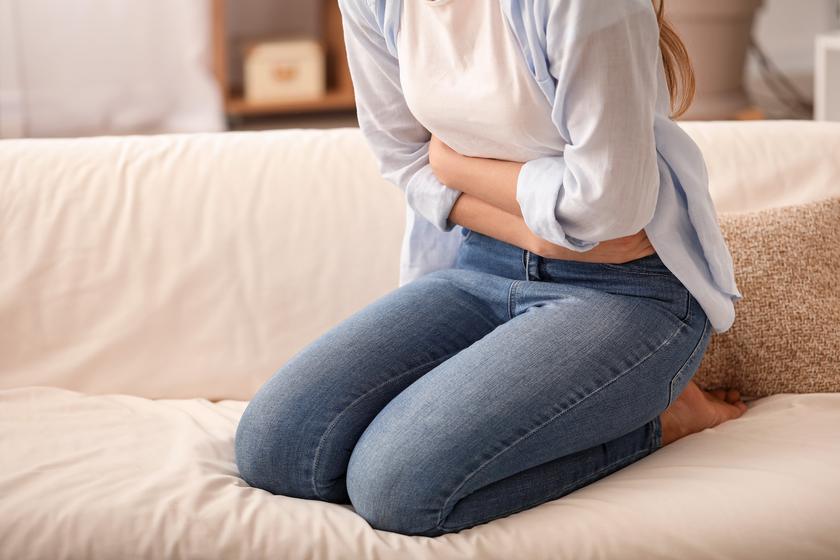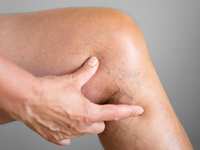Endometriosis: Symptoms and When to Seek Care

There's a prevailing belief — resignation might be the better word — that menstruation brings some level of discomfort. The problem, however, is that painful periods are the most common symptom of endometriosis, a chronic and sometimes debilitating condition.
Endometriosis affects 1 in 10 people who menstruate. Let's break down the signs and myths about endometriosis to make it easier to get needed relief.
What is endometriosis?
Endometriosis is named after the endometrium, the layer of tissue that lines the uterus. During a typical menstrual cycle, the endometrium goes through changes due to surges and dips in estrogen and progesterone levels. The endometrium grows thanks to a surge in progesterone, in effort to support a fertilized egg. If fertilization doesn't happen, estrogen and progesterone levels fall and kick off menstrual bleeding, the shedding of the extra lining. People begin to experience endometriosis when the lining's growth to support an egg goes haywire.
"Endometriosis is a condition where endometrial tissue (the inner lining of the uterus) grows outside of the uterus," says Dr. Shan Jiang, an OB-GYN with Houston Methodist.
This endometrial-like tissue can grow on other organs and places within the body, usually around organs in the pelvis or abdomen areas.
"The symptoms of endometriosis are caused by the inflammatory response triggered when endometrial cells implant at locations outside of the uterus, such as the ovaries, bladder, fallopian tubes, colon or vagina," Dr. Jiang says.
Other affected areas of the body can include:
- Diaphragm (the muscle at the bottom of your chest that aids in breathing)
- Intestines
- Ureters
- Peritoneum (the lining of the pelvis and abdomen)
Because this extra tissue responds to hormonal signals as the endometrium does, it can swell and cause bleeding. As inflammation and infection builds up (since the blood has no outlet as it does in the uterus), scar tissue, cysts called endometriomas and lesions can develop. Adhesions, when the extra tissue binds with an organ's tissue, can also occur.
Endometriosis can start during the teenage years and last through a person's forties. The most common ages for endometriosis diagnosis are between 25 and 35, according to Dr. Jiang.
Endometriosis symptoms
The misconception that having a period should be painful can keep some people from talking to their doctor. In fact, painful menstrual cycles or chronic abdominal or pelvic pain during or in between periods should not be the norm. These two symptoms are the two most common that prompt people to see their doctors. Other endometriosis symptoms can include:
- Fatigue
- Heavy menstrual bleeding
- Painful intercourse
- Painful urination and bowel movements during a period
- Spotting between periods
- Infertility
Endometriosis can exist on a spectrum — some people may have it and not even know it, while others can have debilitating symptoms. For those with mild to no symptoms, they may not discover the condition until they have issues getting pregnant, or it's discovered during a procedure.
How is endometriosis treated?
Endometriosis treatment will depend on your age, the severity of your condition and pain, and your plans for pregnancy.
According to Dr. Jiang, medications are often used in treating endometriosis, including pain management with NSAIDs and continuous hormonal contraceptives (birth control pills, progesterone pills, Depo provera injections, Nexplanon, IUD) that can lessen the severity of periods.
More severe cases can be treated with hormone receptor blockers or surgery, Dr. Jiang says. Medications such as gonadotropin-releasing hormone (GnRH) and danazol will block the hormones that cause the menstrual cycle. Surgeries to address endometriosis can include:
- Laparoscopy: During this minimally invasive procedure, a small scope is inserted into the abdomen for the surgeon to find and remove the extra tissue
- Hysterectomy: For severe cases of endometriosis, your doctor may recommend removing the uterus due to the amount of scar tissue, in an effort to preserve fertility, or if the scar tissue has grown into the wall of the uterus (adenomyosis)
Endometriosis, pregnancy and infertility
Endometriosis is one of the most common conditions associated with infertility for people who menstruate, and one of the biggest complications of the condition. It can be difficult to get pregnant with endometriosis because the scar tissue that collects can damage sperm or fertilized eggs, block the fallopian tubes or prevent eggs from releasing.
"Endometriosis has a negative effect on fertility," Dr. Jiang says. "The inflammatory effect as well as anatomic distortions caused by endometriosis contribute to infertility. Thirty to fifty percent of women with endometriosis will experience infertility."
While a healthy, successful pregnancy is possible with endometriosis, a person wanting to get pregnant will need to work with their OB-GYN. They can develop a treatment plan that can help you pursue pregnancy with endometriosis.
"During pregnancy, endometriosis lesions will usually regress," Dr. Jiang says. "Patients will often see improvement in pain symptoms. However, there have been studies that link endometriosis to preterm delivery, placenta previa, hemorrhage and low birth weight."
In addition, people with endometriosis lesions in the ovaries have an increased risk of developing certain types of ovarian cancer, according to Dr. Jiang. This includes epithelial ovarian cancer, including clear cell and endometrioid carcinomas.
Does endometriosis get better after menopause?
Endometriosis symptoms usually will resolve after menopause due to the drop in estrogen levels, according to Dr. Jiang.
"For 2% to 5% of patients, symptoms can continue after menopause," she says.
People may continue to experience symptoms due to any hormonal treatments they may take to ease menopause.
When to seek care for endometriosis
Having a period should not mean suffering in silence. Talk to your doctor if you have heavy periods and any associated pain. Endometriosis tests, from a pelvic exam or an ultrasound to an MRI or laparoscopy, may be used to confirm an endometriosis diagnosis.
"People with endometriosis can experience depression and anxiety because of their symptoms," Dr. Jiang said. "It's important to make sure you see an OB-GYN to get help for any symptoms you may have."
By: Kim Rivera Huston-Weber

















